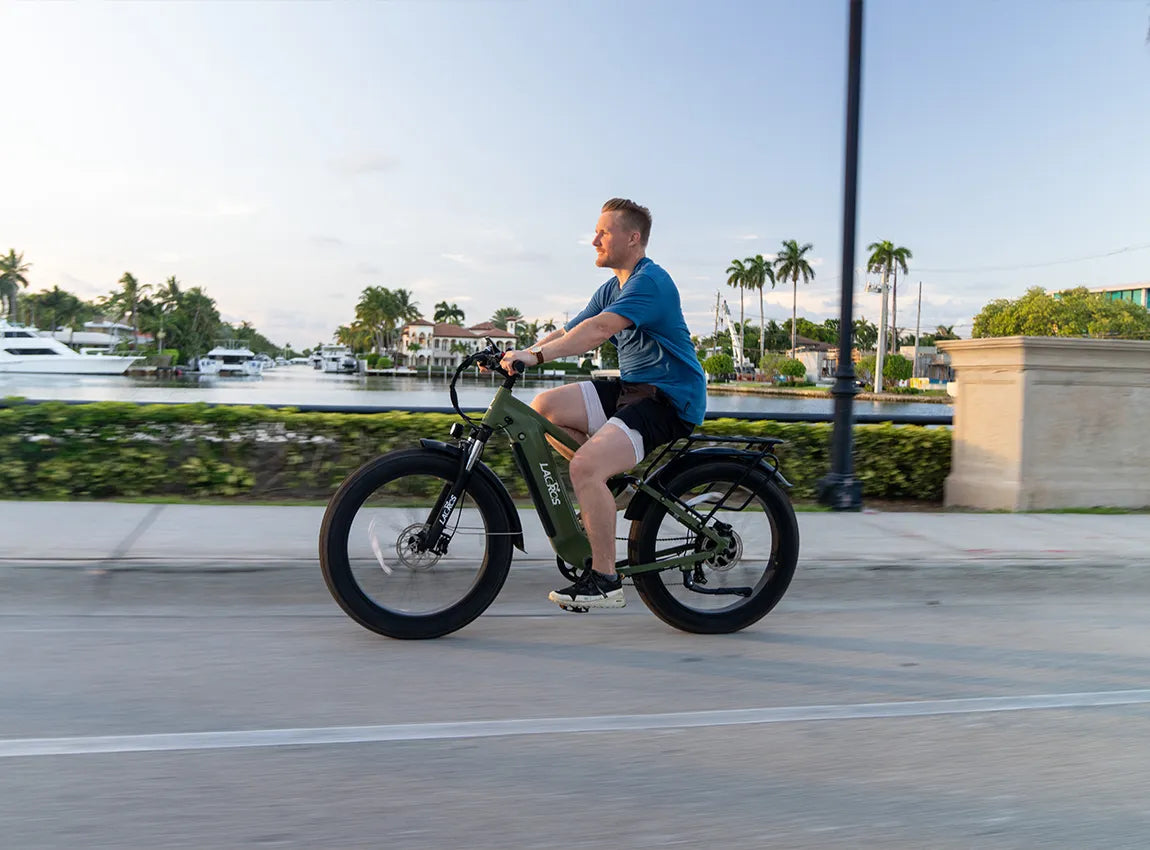Electric bikes are designed to deliver an impressive balance of speed, efficiency, and control. Depending on the class and motor power, most e-bikes reach speeds between 20 and 28 mph. Class 1 and 2 models are limited to 20 mph, while Class 3 can achieve up to 28 mph. High-performance and custom-modified e-bikes can push beyond these limits, with some capable of 60 mph or more.
 Introduction to E-Bike Speed and Performance
Introduction to E-Bike Speed and Performance
E-Bike Classes
- Class 1: Pedal-assist only, up to 20 mph.
- Class 2: Throttle and pedal-assist, up to 20 mph.
- Class 3: Pedal-assist only, up to 28 mph.
Factors Affecting Speed and Performance
- Motor Power: Higher wattage motors (750W+) improve acceleration and hill-climbing ability.
- Battery Capacity: Larger batteries extend assistance duration, but impact weight and range.
- Terrain & Wind Resistance: Hills, headwinds, and riding position influence achievable speed.
- Rider Weight: Heavier loads require more motor power, affecting top speed.
- Tire Pressure & Maintenance: Proper setup ensures rolling efficiency and optimized performance.
- Braking System: Advanced brakes provide safety when traveling at higher speeds.
Key Factors That Determine an E-Bike’s Speed
| Factor | Subtopic | Details |
|---|---|---|
| Motor Power | Wattage (W) | Higher wattage indicates more power, supporting acceleration and maintaining speed under load. |
| Motor Types | Mid-drive motors integrate with gears for versatile performance; hub motors are simpler and cost-effective. | |
| Battery Capacity | Voltage & Amp-hours | Determines how long the motor can sustain power and maintain speed. |
| High Voltage Advantage | Higher voltage batteries typically enable greater speed and range. | |
| Rider Weight & Load | Heavier Riders | More power required to maintain the same speed, impacting performance. |
| Terrain & Weather | Hills & Headwinds | Reduce speed and demand more motor output. |
| Flat Surfaces & Tailwinds | Enhance speed with less effort. | |
| Local Regulations | Speed Restrictions | Class-based laws set maximum speeds for safe riding. |
E-Bike Classifications and Speed Limits
Speed Limits: Class 1 & 2 are capped at 20 mph; Class 3 is capped at 28 mph. Always confirm local laws as requirements vary by state and region.
Regulations and Legal Considerations for E-Bike Speed
Federal law defines e-bikes as bicycles with operable pedals, a motor under 750W, and a maximum speed of 20 mph under motor power alone. While manufacturing standards are federal, states and municipalities regulate where and how e-bikes can be used. This makes it essential to review local regulations before riding.
Real-World Speed Examples: What to Expect
In real-world scenarios, most Class 1 and 2 e-bikes comfortably sustain up to 20 mph on flat terrain, while Class 3 models extend this to 28 mph. Rider weight, terrain, battery condition, and weather may shift actual performance.
Safety Considerations When Riding at Higher Speeds
Key Safety Tips
- Wear a Helmet: A fitted helmet is essential for safe, high-speed riding.
- Adjust Speed to Conditions: Slow down on wet, uneven, or congested roads.
- Increase Visibility: Use lights, reflective gear, and bright clothing in low light.
- Practice Safe Techniques: Smooth acceleration and controlled braking improve safety.
- Stay Aware: Be alert to vehicles, pedestrians, and other cyclists at all times.
 Choosing the Right E-Bike for Your Speed Needs
Choosing the Right E-Bike for Your Speed Needs
Selecting the best e-bike depends on how you plan to ride—whether commuting, tackling rugged trails, or enjoying recreational rides. Each class offers distinct speed capabilities suited to different lifestyles. At Lacrosebike, our high-performance electric bikes are engineered with premium components and innovative designs to maximize speed, safety, and long-term durability. By focusing on rider experience, advanced motor technology, and robust battery systems, Lacrosebike delivers a ride that stands apart in both performance and reliability.



Share:
What Happens if Your E-Bike Battery Runs Out?
Guide to Storing Electric Bike Batteries Safely and Effectively